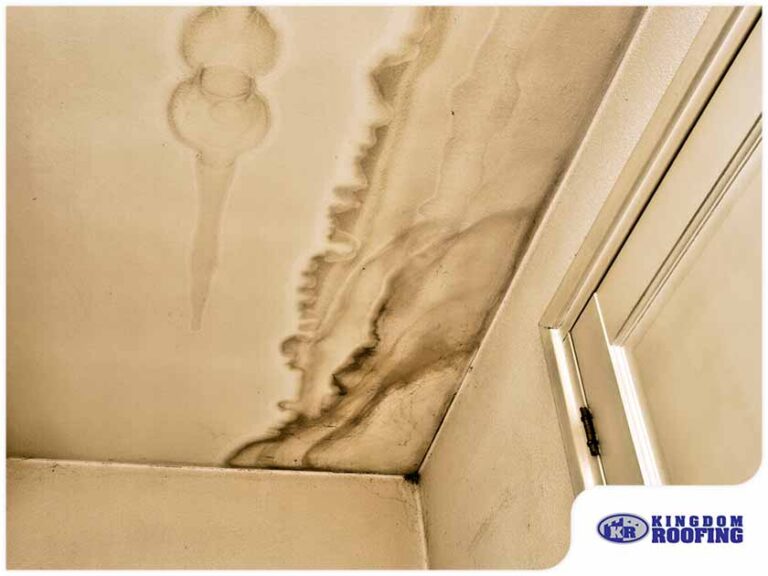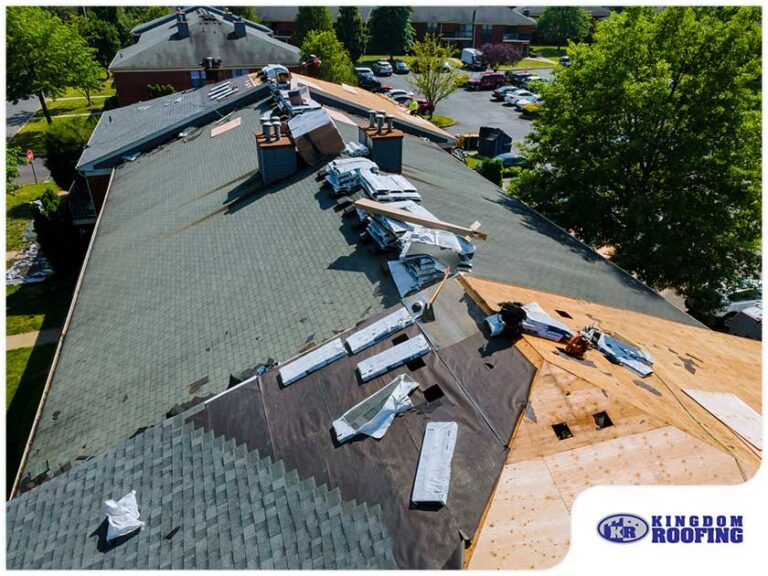Choosing the right roofing underlayment is crucial for protecting your home from water damage and ensuring the longevity of your roof. In areas where weather can be unpredictable, opting for a durable and efficient underlayment can save you from costly roof repair and replacement in the long run.

In this post, trusted roofing contractor Kingdom Roofing shares a comparison of synthetic and felt underlayment to help you make an informed decision.
What Is Roofing Underlayment?
Roofing underlayment acts as a barrier between your roof’s shingles and the roof deck. It’s designed to provide an additional layer of protection from the elements, particularly water. There are mainly two types of underlayment: synthetic and felt. The choice between these materials can significantly impact the performance and durability of your roof.
Felt Underlayment
Felt underlayment, also known as tar paper, is made from either organic or fiberglass substrate coated in asphalt. It’s been the go-to choice for decades due to its affordability and availability. However, felt underlayment has some disadvantages, especially in environments where high humidity and frequent rainstorms are common. Felt can tear easily under high winds and can become brittle and break down over time when exposed to prolonged moisture, requiring more frequent roof repair services.
Synthetic Underlayment
Synthetic underlayment is a newer innovation in the roofing industry. Made from polypropylene, polyester, or fiberglass, it offers several advantages over traditional felt. It’s incredibly durable and resistant to tears and punctures, and it can withstand exposure to UV light and moisture much better than felt. This makes it an excellent choice for areas with temperate climates, providing longer-lasting protection and potentially reducing the need for roof repairs.
Weighing the Pros and Cons
When deciding between synthetic and felt underlayment for your home, consider the following:
- Durability – Synthetic underlayment is more durable and tear-resistant and can better withstand the elements.
- Water Resistance – Synthetic materials offer superior water resistance, an essential factor in a rainy climate.
- Installation – Synthetic underlayment is generally lighter and easier to install compared to felt. This can lead to faster and possibly cheaper installation costs.
- Cost – Felt underlayment is typically less expensive upfront, but synthetic underlayment may offer better value over time due to its longevity and reduced maintenance.
The Right Choice for Your Home
Choosing between synthetic and felt underlayment depends on your needs, budget and local climate. In areas where the weather can be tough, synthetic underlayment offers durability, potentially saving you from the frequent need for roof repair services.
At Kingdom Roofing, we’re committed to protecting your home. Our skilled team offers solutions for all roofing needs, ensuring quality from repairs to replacements. Trust us for top-notch service and peace of mind.
Contact Our Roofing Experts Today!
Whether you’re constructing a new home or considering a roofing replacement, consult Kingdom Roofing. We’re always here to provide you with expert advice and exceptional service and ensure your roof is well-equipped to protect your home for years to come. Call (941) 217-2411 or complete our contact form to book an appointment.



